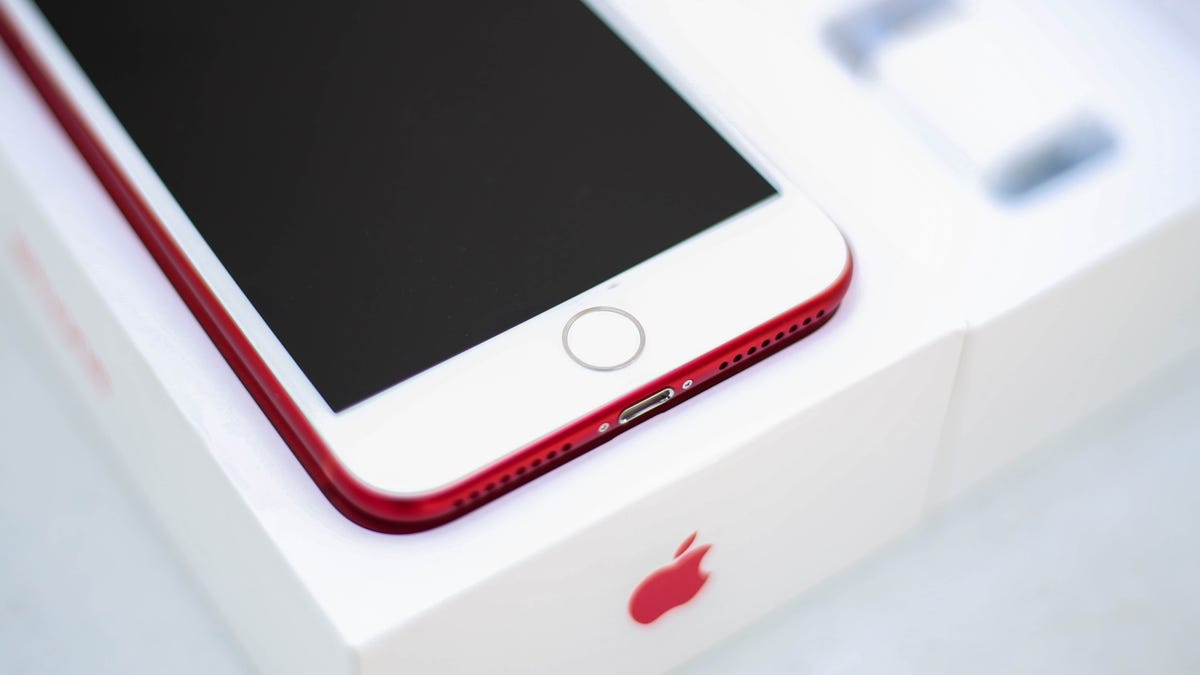Apple's iPhone unit sales take a surprising fall
The tech giant's revenue rises, though, because of "robust" demand for the pricier iPhone 7 Plus.

This isn't the kind of surprise Apple watchers want to see.
Apple on Tuesday reported a slight drop in quarterly iPhone unit sales to 50.8 million units, from 51.2 million units a year earlier. Analysts, on average, had expected it to sell 52.2 million in the fiscal second quarter that ended April 1.
Even though Apple sold fewer iPhones, it made more money because of demand for its pricier iPhone 7 Plus. The iPhone's average selling price was $655 in the quarter, up from $642 a year ago.
iPhone revenue rose 1 percent to $33.2 billion, benefiting from the iPhone 7 Plus. That model included a newer, better camera than its predecessors and its smaller sibling, the iPhone 7. Apple CEO Tim Cook called iPhone 7 Plus demand "robust" and admitted that Apple didn't correctly predict just how many people would opt for the bigger phone over the iPhone 7.
"It took us a little while to adjust all the way back through the supply chain and to bring iPhone 7 Plus [availability] into balance, which occurred ... early this past quarter," Cook said.
This quarter a year ago marked the first time iPhone sales fell -- ever -- but Apple's iPhone 7, released in September, helped it rebound. The company didn't change the design of the device much from the past two generations of iPhones, but the dual lenses in the bigger, pricier iPhone 7 Plus attracted millions of buyers.
In its fiscal first quarter, which ended in late December, the company reported the highest number of iPhones ever sold: 78.3 million.
Still, the devices weren't enough to boost Apple's iPhone sales this quarter. The decline marks only the fourth time ever that iPhone unit sales have fallen. That's largely because the market is saturated with iPhone owners unwilling to upgrade, as well as consumers sticking around to see if bigger changes are afoot with the next version.
During its second quarter, Apple introduced the Product Red iPhone 7 and 7 Plus, the first time its marquee phone has been sold in bright red to help fund programs that combat HIV and AIDS in sub-Saharan Africa. The company also boosted the cheaper iPhone SE's storage and updated its 9.7-inch iPad. But it's the iPhone 8, expected later this year, that has everyone talking.
Analysts and other market watchers are largely looking ahead to the next smartphone model -- the iPhone 8, or whatever it'll be called -- instead of worrying about last quarter's results. The upcoming device -- marking the 10-year anniversary of the first iPhone -- already has sky-high expectations built in. That leaves little room to worry about current results.
Apple shares slid 1.8 percent to $144.88 in after-hours trading.
Everything else
Apple sold 8.9 million iPads, down from 10.3 million but in line with analyst expectations, according to Bernstein. The quarter marked the 13th-straight decline in Apple's tablet unit sales. The drop comes despite Apple's efforts to revitalize the market with its Pro models and with lower pricing for its 9.7-inch iPad.
For Apple's Mac line, the company sold 4.2 million computers, in line with what analysts had anticipated.
Sales in all regions rose, except the key Greater China market. In that region, Apple's revenue dropped 14 percent to $10.7 billion. Cook said Apple continues to be "very enthusiastic" about China but noted sales likely won't rebound this quarter.
"Where the iPhone 7 Plus did well, we didn't perform as well on some of the previous generation iPhones," Cook said. "What I now believe is that we'll improve a bit more during this current quarter, not back to growth but improve -- but make more progress."
Apple's services business posted an 18 percent jump to $7 billion. And sales of company's "other products" -- which includes the Apple Watch, AirPods, Beats headphones, iPods and other accessories -- climbed 31 percent to $2.87 billion.
Cook noted that the Apple Watch, AirPods and Beats revenue in the last four quarters is now the size of a Fortune 500 company.
"Demand for AirPods significantly exceed supply, and growth in Beats products has also been very strong," Cook said during a call with analysts. He added that Apple has "seen the Watch as a really key product category for us since before we launched it."
"We're really proud of the growth with the business," Cook said, without giving any specific figures. "The Watch units more than doubled in six of our top 10 markets, which is phenomenal growth, particularly on a non-holiday quarter."
Overall, Apple reported revenue of $52.9 billion, up 4.6 percent from a year ago. Analysts expected it to post revenue of $53 billion, according to a poll by Thomson Reuters.
Apple's net income increased to $11 billion, or $2.10 a share, from $10.5 billion, or $1.90 a share, a year earlier. Analysts had anticipated per-share earnings of $2.02.
For the June quarter, Apple expects revenue to total $43.5 billion to $45.5 billion. Analysts had estimated sales of $45.6 billion.
Apple on Tuesday also boosted the amount of money it's returning to shareholders to $300 billion, from $250 billion, through stock buybacks and dividends. The company plans to return that total by the end of March 2019.
Does the Mac still matter? Apple execs tell why the MacBook Pro was over four years in the making, and why we should care.
Virtual reality 101: CNET tells you everything you need to know about VR.
Update at 3:20 p.m. PT with comments from conference call.

